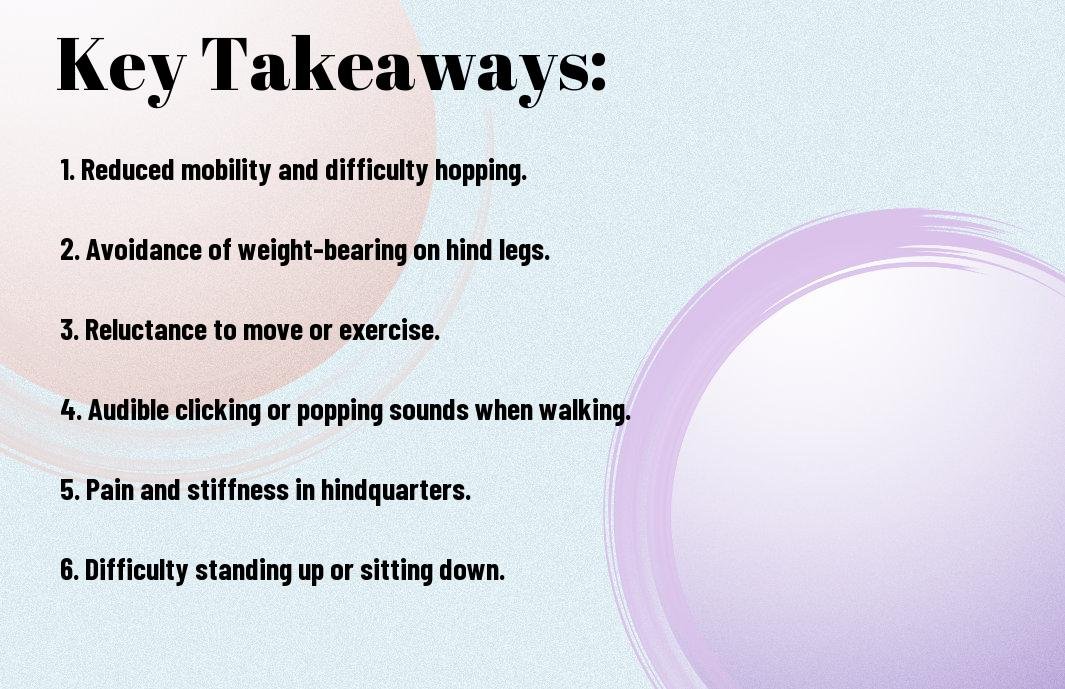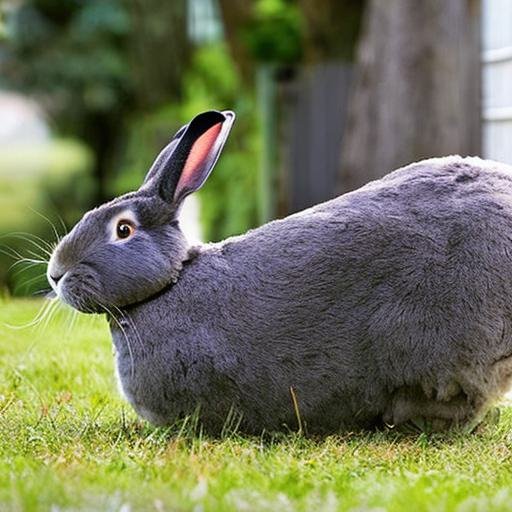Experiencing hindquarters hip dysplasia in your Flemish Giant rabbit can be a challenging and distressing situation. Understanding the symptoms is vital in order to provide the best care for your beloved pet. It is important to recognize the signs early to ensure proper treatment and management. In this blog post, we will discuss the common symptoms of hindquarters hip dysplasia in Flemish Giant rabbits, as well as ways to alleviate their discomfort and improve their quality of life.
Key Takeaways:
- Decreased Mobility: One of the primary symptoms of hindquarters hip dysplasia in Flemish Giant rabbits is a noticeable decrease in their mobility. You may observe them having trouble moving, standing, or hopping around as freely as before.
- Pain and Discomfort: Rabbits with hip dysplasia may display signs of pain and discomfort, such as reluctance to move, reluctance to be handled, and vocalizations indicating distress. They may also exhibit a hunched posture or favor one leg over the other.
- Abnormal Gait: Hindquarters hip dysplasia can also cause rabbits to have an abnormal gait, with their hind legs appearing to be weak or wobbly. This can be an indication that their hip joints are not functioning properly, leading to a compromised ability to walk or hop normally.

Identifying Hip Dysplasia in Flemish Giant Rabbits
Obviously, as a responsible pet owner, you want to be able to identify any potential health issues in your Flemish Giant rabbit as early as possible. One such issue that can arise in these large breeds is hip dysplasia. Being able to recognize the symptoms and signs of this condition is crucial for providing the best care for your rabbit.
Common Signs of Hip Dysplasia
If you suspect your Flemish Giant rabbit may be suffering from hip dysplasia, there are several common signs to look out for. These include **difficulty standing up**, **bunny hopping instead of using a normal gait**, **reluctance to jump or climb**, and **a decrease in overall activity**. If you notice your rabbit exhibiting any of these behaviors, it may be a sign of hip dysplasia.
Specific Symptoms to Flemish Giant Rabbits
In addition to the common signs of hip dysplasia, there are specific symptoms that are more common in Flemish Giant rabbits. **You may notice that your rabbit has a wider stance than usual** or **seems to be in pain when moving**. Your rabbit may also **struggle to groom itself** due to discomfort. It’s important to keep an eye out for these specific symptoms as they can be indicative of hip dysplasia in Flemish Giants.
Understanding the Causes of Hip Dysplasia
Despite the specific cause of hindquarters hip dysplasia in Flemish Giant rabbits not being entirely clear, there are some known factors that can contribute to the development of this condition. By understanding these factors, you can take steps to minimize the risk and ensure the overall well-being of your rabbit.
Genetic Factors and Breeding
When it comes to hip dysplasia in Flemish Giant rabbits, genetics play a significant role. This condition can be inherited from one or both parents, so selective breeding is crucial in preventing the spread of hip dysplasia within the rabbit population. If you are considering breeding Flemish Giants, it is essential to ensure that both parents have strong, healthy hips. Regular health checks and screenings, especially for breeding stock, can help identify any potential genetic predisposition to hip dysplasia. Therefore, it’s important to work with a reputable breeder who prioritizes the health and welfare of their rabbits and has taken steps to mitigate the risk of passing on hip dysplasia to future generations. Though the presence of this condition in a rabbit’s lineage does not necessarily guarantee that it will develop hip dysplasia, it does significantly increase the chances.
Environmental Factors and Lifestyle
In addition to genetic predisposition, environmental factors and lifestyle can also play a role in the development of hip dysplasia in Flemish Giant rabbits. Providing your rabbit with a spacious, clean living environment and ensuring that they have access to proper nutrition and exercise can help reduce the likelihood of hip dysplasia. It’s important to avoid overcrowding and provide your rabbit with adequate space to move and play, as a sedentary lifestyle can contribute to the development of hip dysplasia. Assume that proper diet and exercise are just as important for your rabbit’s overall well-being as they are for your own. Assumptions about your rabbit’s welfare can have lasting effects on their health, so it’s crucial to be mindful of their living conditions and lifestyle.
Treatment and Management of Hip Dysplasia
Your Flemish Giant may require specific treatment and management if diagnosed with hindquarters hip dysplasia. It’s essential to work closely with a knowledgeable veterinarian to determine the best course of action for your rabbit’s unique condition.
Veterinarian Diagnosis and Treatments
When you notice symptoms of hindquarters hip dysplasia in your Flemish Giant rabbit, it is crucial to seek professional veterinary care immediately. Your veterinarian will conduct a thorough physical examination and may recommend X-rays to confirm the diagnosis. Depending on the severity of the condition, treatment options may include medication for pain management, physical therapy, and in some cases, surgery. It’s important to follow your veterinarian’s recommendations closely to ensure the best possible outcome for your rabbit.
Home Care and Management
Once your rabbit has been diagnosed with hip dysplasia, it’s essential to provide a comfortable and supportive living environment to help manage the condition. This may include creating a low-stress environment, providing soft bedding, and ensuring easy access to food, water, and litter. Additionally, regular exercise and a balanced diet can help maintain your rabbit’s overall health and wellbeing. It’s important to monitor your rabbit’s symptoms closely and communicate regularly with your veterinarian to make any necessary adjustments to their care plan.
Conclusion
With these considerations, it is important to be observant of any symptoms of hindquarters hip dysplasia in your Flemish Giant rabbit. Keep an eye out for any signs of stiffness, difficulty moving, or an abnormal gait in your rabbit. If you notice any of these symptoms, it is crucial to seek veterinary care in order to properly diagnose and treat this condition. By being proactive and attentive to your rabbit’s health, you can help ensure a better quality of life for your beloved pet.
FAQ
Q: What are the symptoms of hindquarters hip dysplasia in Flemish Giant rabbits?
A: The symptoms of hindquarters hip dysplasia in Flemish Giant rabbits include lameness, reluctance to move, difficulty in standing up or jumping, and in severe cases, a noticeable change in the shape and structure of the hindquarters.
Q: Can hindquarters hip dysplasia in Flemish Giant rabbits be treated?
A: Unfortunately, hindquarters hip dysplasia in Flemish Giant rabbits cannot be cured. However, it can be managed with proper care, including providing a soft and supportive bedding, ensuring a diet that promotes healthy weight and bone development, and regular gentle exercise to help maintain muscle strength.
Q: How can I prevent hindquarters hip dysplasia in my Flemish Giant rabbit?
A: To prevent hindquarters hip dysplasia in Flemish Giant rabbits, it is important to provide a proper diet that includes the right balance of nutrients to support bone health, limit excessive jumping and rough play, and ensure a comfortable and spacious living environment that reduces the strain on the rabbit’s hindquarters.
